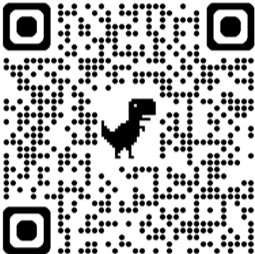Nature of Science Scenarios Band
This game has students find the parts of the scientific method within given scenarios.
Create multiple-choice games on Wisc-Online and play them on our Chakalaka mobile app!
But that's not all! Explore educational games created by others. Simply search by category or enter agame code number and dive into a world of learning and fun.
Download the Chakalaka mobile app here:

Topics of this game:
- Samantha loves gummy bears. One day while eating some gummy bears one of them dropped into a glass of water by accident. She began to wonder if gummy bears would grow or shrink in different types of water. What would Samantha's question be?
- Samantha does some research and discovers that salt water usually dehydrates things, but sugar water helps candies grow. What HYPOTHESIS should Samantha make based on her research?
- If Samantha wants to test her hypothesis to see which type of water gummy bears will grow or shrink in, what type of investigation would help her the most?
- Samantha gets 3 cups. She puts 50 ml of tap water into each cup. To cup 1, she adds one teaspoon of salt and labels it salt water. To cup 2, she adds one teaspoon of sugar and labels it sugar water. Cup 3 she leaves alone and labels it plain water. She places 3 gummy bears into each cup of water for 3 days. What is her INDEPENDENT variable?
- Samantha gets 3 cups. She puts 50 ml of tap water into each cup. To cup 1, she adds one teaspoon of salt and labels it salt water. To cup 2, she adds one teaspoon of sugar and labels it sugar water. Cup 3 she leaves alone and labels it plain water. She places 3 gummy bears into each cup of water for 3 days. What is her DEPENDENT variable?
- Samantha gets 3 cups. She puts 50 ml of tap water into each cup. To cup 1, she adds one teaspoon of salt and labels it salt water. To cup 2, she adds one teaspoon of sugar and labels it sugar water. Cup 3 she leaves alone and labels it plain water. She places 3 gummy bears into each cup of water for 3 days. What is her CONTROL GROUP?
- Samantha gets 3 cups. She puts 50 ml of tap water into each cup. To cup 1, she adds one teaspoon of salt and labels it salt water. To cup 2, she adds one teaspoon of sugar and labels it sugar water. Cup 3 she leaves alone and labels it plain water. She places 3 gummy bears into each cup of water for 3 days. Which are CONSTANTS?
- Samantha gets 3 cups. She puts 50 ml of tap water into each cup. To cup 1, she adds one teaspoon of salt and labels it salt water. To cup 2, she adds one teaspoon of sugar and labels it sugar water. Cup 3 she leaves alone and labels it plain water. She places 3 gummy bears into each cup of water for 3 days. What are her EXPERIMENTAL GROUPS?
- She wrote down what happened to the gummi bears in each cup. This is what she wrote: Plain water change: Day 1: 0mm Day 2: +1mm Day 3: +2mm Salt water change: Day 1: -.5mm Day 2: -1mm Day 3: -2mm Sugar water change: Day 1: +1mm Day 2: +2mm Day 3: +3mm What do scientists call this information?
- If Samantha creates a table or graph to better understand her data, what step of scientific inquiry would she be doing?
- Looking at Samantha's data, what conclusion can be made? Plain water change: Day 1: 0mm Day 2: +1mm Day 3: +2mm Salt water change: Day 1: -.5mm Day 2: -1mm Day 3: -2mm Sugar water change: Day 1: +1mm Day 2: +2mm Day 3: +3mm
- Samantha creates a large poster that displays what she did and what her results were. She brought the poster to school and shared it with her science class. What step of scientific inquiry does this demonstrate?
User comments are currently unavailable. We apologize for the inconvenience and are working to restore this feature as soon as possible.

